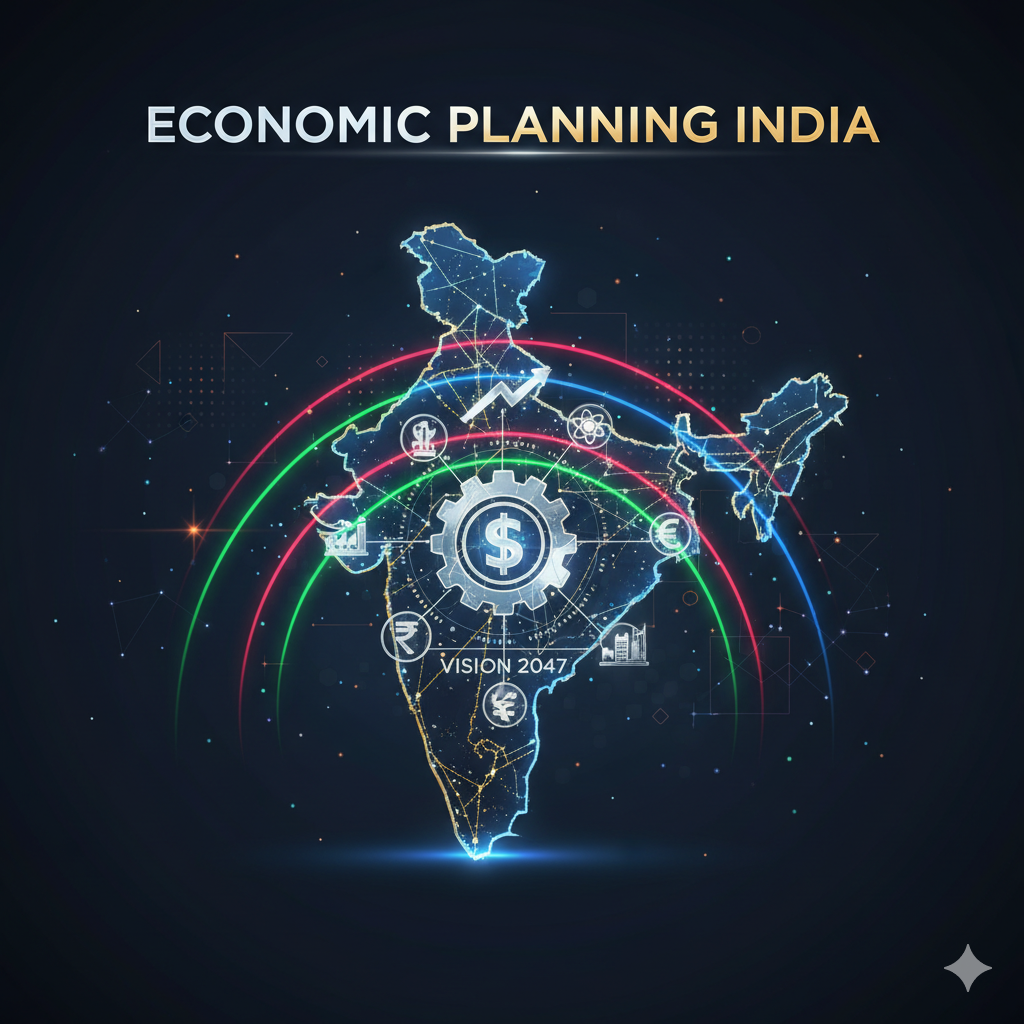Introduction
Water is the lifeline of agriculture, and efficient irrigation is crucial for enhancing crop productivity, farmer income, and food security. India, with its vast agricultural landscape, is heavily dependent on monsoon rainfall, which is often erratic and unevenly distributed. To address water scarcity, optimize irrigation, and ensure sustainable agricultural growth, the Government of India launched the Pradhan Mantri Krishi Sinchai Yojana (PMKSY) in 2015, building upon earlier irrigation initiatives.
PMKSY aims to enhance water use efficiency, extend irrigation coverage, promote water conservation, and ensure access to assured irrigation for all agricultural lands. It is considered a flagship program for transforming India’s irrigation landscape, contributing to climate-resilient and productive agriculture.
Background and Need
- Importance of Irrigation in India
- Agriculture consumes around 80% of total freshwater in India, with irrigation being central to crop production and rural livelihoods.
- Only about 50% of the total cultivable area has assured irrigation, leaving millions of farmers dependent on rainfall.
- Agriculture consumes around 80% of total freshwater in India, with irrigation being central to crop production and rural livelihoods.
- Challenges in Traditional Irrigation Projects
- Incomplete or delayed irrigation projects have limited the potential of available water resources.
- Conventional irrigation methods, like flood irrigation, result in water wastage, soil degradation, and inefficient nutrient use.
- Incomplete or delayed irrigation projects have limited the potential of available water resources.
- Genesis of PMKSY
- Launched in July 2015 by the Ministry of Jal Shakti (earlier Ministry of Water Resources).
- Aims to integrate and synergize all irrigation-related programs under a single framework.
- PMKSY emphasizes “Har Khet Ko Pani” (Water for Every Field) and “Per Drop More Crop”, focusing on expansion, efficiency, and equity.
Objectives of PMKSY
The program is designed to address multiple challenges and achieve comprehensive goals:
- Expansion of Irrigation Coverage (Har Khet Ko Pani)
- Extend irrigation facilities to unirrigated and rainfed areas.
- Ensure every farm receives adequate and timely irrigation.
- Water Use Efficiency (Per Drop More Crop)
- Promote micro-irrigation techniques like drip and sprinkler systems.
- Improve water productivity per unit of water used.
- Integrated Water Resource Management
- Optimize use of surface water, groundwater, and rainwater.
- Encourage watershed development, water recycling, and rainwater harvesting.
- Enhancing Agricultural Productivity
- Enable high-value crops, multiple cropping, and better yields.
- Reduce crop loss due to droughts or erratic rainfall.
- Sustainability and Climate Resilience
- Promote efficient, eco-friendly irrigation practices.
- Reduce groundwater depletion and ensure long-term water security.
- Farmer Income Enhancement
- Increase crop production and income through assured irrigation and resource efficiency.
Key Features of PMKSY
- Integrated Approach
- PMKSY integrates ongoing schemes like Accelerated Irrigation Benefits Programme (AIBP), On-Farm Water Management (OFWM), Micro Irrigation (MI), and Command Area Development (CAD).
- Ensures coordinated planning, resource allocation, and monitoring.
- PMKSY integrates ongoing schemes like Accelerated Irrigation Benefits Programme (AIBP), On-Farm Water Management (OFWM), Micro Irrigation (MI), and Command Area Development (CAD).
- Focus on Micro Irrigation
- Encourages drip and sprinkler irrigation systems to maximize water use efficiency.
- Promotes precision irrigation for horticulture, vegetables, fruits, and high-value crops.
- Decentralized Planning and Implementation
- States and districts play a key role in project selection, resource allocation, and monitoring.
- Local authorities ensure projects align with regional water availability and cropping patterns.
- Use of Technology and Innovation
- Incorporates geotagging, remote sensing, GIS mapping, and real-time monitoring.
- Supports soil moisture sensors, automated irrigation scheduling, and digital water management.
- Financial Support and Subsidies
- Provides central financial assistance, subsidies for micro irrigation, and soft loans.
- Encourages small and marginal farmers to adopt modern irrigation techniques.
Components of PMKSY
PMKSY has multiple components to achieve its objectives:
1. Har Khet Ko Pani (HKKP)
- Goal: Ensure irrigation to every field, covering both major and minor projects.
- Activities:
- Completion of ongoing major and medium irrigation projects.
- Construction of minor irrigation structures like check dams, farm ponds, and lift irrigation schemes.
- Focus on equitable water distribution to all farmers.
2. Per Drop More Crop (PDMC)
- Goal: Improve water use efficiency through micro irrigation and precision farming.
- Activities:
- Promotion of drip and sprinkler irrigation systems.
- Soil moisture management and fertigation.
- Training farmers on water-saving techniques and crop-specific irrigation schedules.
3. On-Farm Water Management (OFWM)
- Ensures efficient water delivery to farm plots.
- Implements field channels, lined canals, and leveling of fields to minimize water loss.
4. Watershed Development
- Promotes rainwater harvesting, soil conservation, and recharge of groundwater.
- Ensures integrated management of water resources in rainfed areas.
5. Command Area Development (CAD)
- Focuses on planning and development of command areas under major irrigation projects.
- Activities include field channels, water distribution networks, and participatory water management.
6. Support for Technology and Capacity Building
- Farmer training in modern irrigation methods, system maintenance, and water conservation.
- Promotion of R&D and innovative technologies for efficient irrigation.
Implementation Mechanism
- Central-State Partnership
- PMKSY is a centrally sponsored scheme, with funding shared between Centre and States.
- States execute projects, select beneficiaries, and monitor progress.
- Funding Pattern
- General States: 50% central, 50% state.
- Special Category States (NE, Himalayan, J&K): 90% central, 10% state.
- Project Selection and Approval
- States prepare Detailed Project Reports (DPRs).
- DPRs are approved based on technical feasibility, cost-effectiveness, and potential irrigated area.
- Monitoring and Evaluation
- Central Monitoring: Ministry of Jal Shakti, Central Water Commission (CWC).
- Tools: MIS, geo-tagging, remote sensing, and field inspections.
- Ensures timely execution and proper utilization of funds.
- Beneficiary Selection
- Focus on small and marginal farmers, rainfed areas, and high-value crop regions.
- Transparent selection using farmer databases and land records.
Achievements and Impact
- Expansion of Irrigation Coverage
- Millions of hectares brought under new irrigation facilities.
- Increased cropping intensity and multiple crop cycles.
- Improved Water Use Efficiency
- Widespread adoption of drip and sprinkler irrigation.
- Water productivity increased, reducing wastage and groundwater depletion.
- Enhanced Agricultural Productivity and Farmer Income
- Timely irrigation ensured higher yields and better quality produce.
- Encouraged high-value crops like fruits, vegetables, and plantation crops.
- Sustainable and Climate-Resilient Agriculture
- Reduced dependence on erratic rainfall.
- Promoted soil and water conservation, integrated water management, and eco-friendly practices.
- Technology Adoption and Capacity Building
- Farmers trained in modern irrigation practices, fertigation, and water management.
- Encouraged precision farming and digital irrigation solutions.
Challenges in PMKSY Implementation
- High Initial Costs for Micro Irrigation
- Even with subsidies, small farmers may find drip and sprinkler systems expensive.
- Even with subsidies, small farmers may find drip and sprinkler systems expensive.
- Maintenance of Infrastructure
- Long-term operation and maintenance of irrigation networks is crucial.
- Long-term operation and maintenance of irrigation networks is crucial.
- Equity in Water Distribution
- Ensuring fair water access for all farmers, especially in command areas.
- Ensuring fair water access for all farmers, especially in command areas.
- Technical Knowledge Gap
- Farmers require training in system operation, fertigation, and scheduling.
- Farmers require training in system operation, fertigation, and scheduling.
- Monitoring and Accountability
- Effective use of MIS, geo-tagging, and field inspections is essential for transparency.
Future Prospects and Reforms
- Digital and Smart Irrigation
- Integration of IoT sensors, mobile apps, and automated water scheduling.
- Real-time monitoring of soil moisture and irrigation efficiency.
- Expansion to Rainfed and Arid Regions
- PMKSY aims to bring water efficiency and assured irrigation to drought-prone areas.
- PMKSY aims to bring water efficiency and assured irrigation to drought-prone areas.
- Integration with High-Value Crops and Horticulture
- Promote horticulture, vegetables, and plantation crops through precision irrigation.
- Promote horticulture, vegetables, and plantation crops through precision irrigation.
- Public-Private Partnerships (PPP)
- Encourage private sector involvement in micro irrigation, infrastructure development, and maintenance.
- Encourage private sector involvement in micro irrigation, infrastructure development, and maintenance.
- Climate-Smart Agriculture
- Adoption of drought-resistant crops, soil moisture conservation, and water recycling.
- Adoption of drought-resistant crops, soil moisture conservation, and water recycling.
- Capacity Building and Awareness
- Strengthening farmer education, extension services, and technology transfer.
Conclusion
The Pradhan Mantri Krishi Sinchai Yojana (PMKSY) is a transformative initiative for India’s agricultural and water sectors, aiming to ensure water for every field, improve water use efficiency, and enhance farm productivity.
By integrating major, medium, and minor irrigation projects, micro irrigation, watershed development, and command area development, PMKSY addresses multiple challenges of water scarcity, climate vulnerability, and low agricultural productivity.
While challenges remain, such as infrastructure maintenance, equitable water distribution, and technical adoption, the mission’s focus on modern irrigation technologies, digital monitoring, and capacity building makes it a cornerstone for sustainable, climate-resilient, and profitable agriculture in India.
PMKSY not only enhances irrigation coverage and productivity but also strengthens rural livelihoods, improves farmer income, and ensures food security, making it a key driver of India’s agricultural growth and water resource management.




